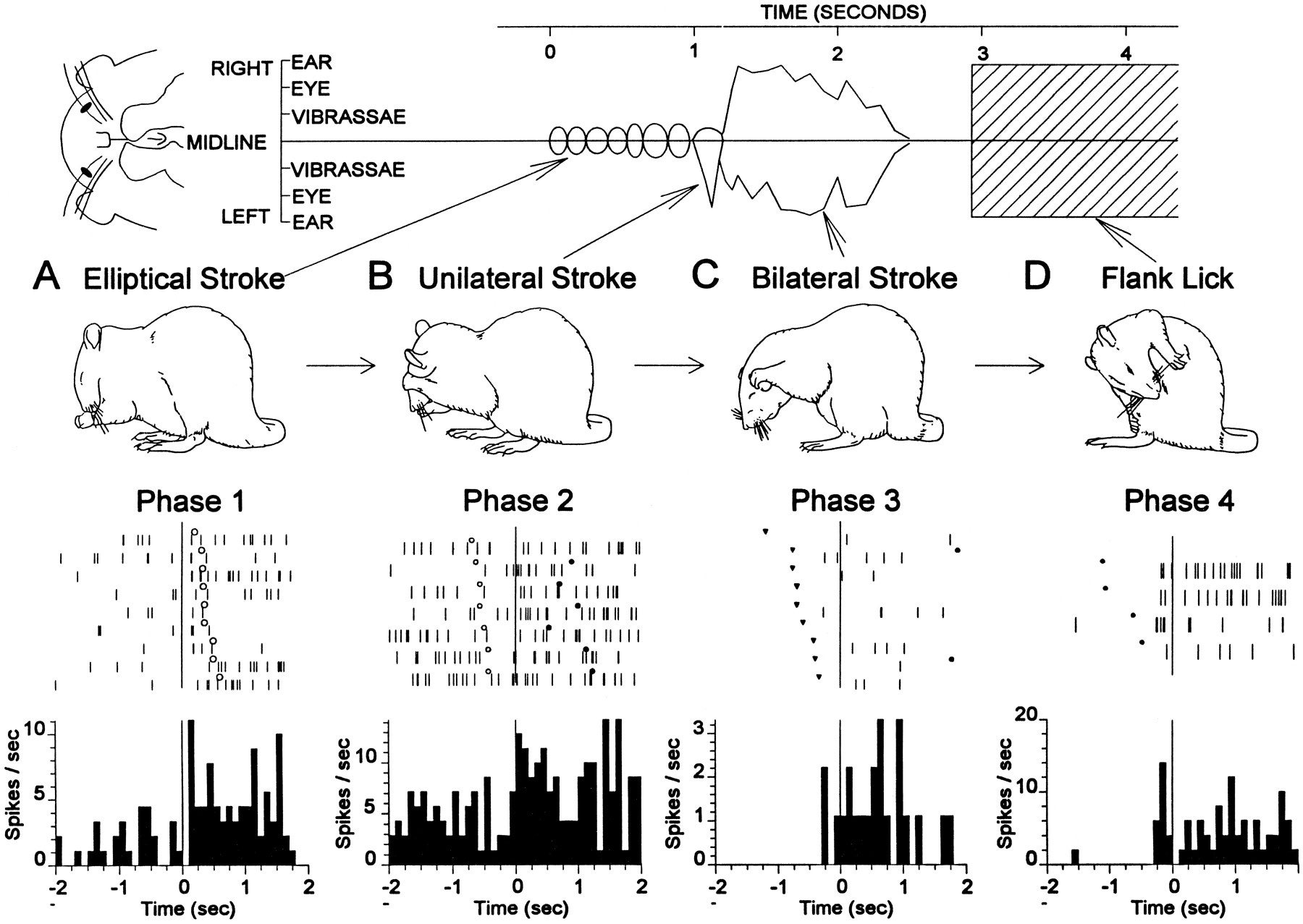
How do brains produce real behavior?
What does animal instinctive behavior share with human language?
How does the brain striatum links rodent grooming behavior to human OCD, Tourettes syndrome, and Parkinson’s disease?
How might communication signals have evolved from brain systems that sequence action in ancestors of animals and humans?

Brain site for action syntax in neostriatum. Lesions here disrupt the sequencing of behavior in rats, and firing of neurons here codes sequential patterns (Cromwell & Berridge, 1996 PDF). Top shows microscope view of excitotoxin lesion versus healthy site in neostriatum.
Real action, language, and thought occur in streams of complex sequential patterns, a shared feature that has been called action syntax.
Brain structures such as neostriatum and substantia nigra help control the sequential pattern of normal animal instinctive action and human language and thought, and nigrostriatal dysfunction is linked to human disorders including obsessive-compulsive disorder, Tourette’s syndrome, and Parkinson’s disease.
Human language/thought sequencing functions of the striatum may derive from its evolutionary ‘action syntax’ role in sequencing instinctive actions, including rodent grooming. Our studies aim to clarify how brain systems carry out action syntax functions.

What is this?
Top shows behavioral syntactic chain, a stereotyped instinctive grooming sequence of rats, mice and squirrels (Berridge & Aldridge, 2000 PDF). Bottom shows firing of neostriatal neurons that code this sequential pattern of behavior (Aldridge & Berridge, 1998 PDF).
California ground squirrels have a special syntactic grooming chain they use as a territorial signal (Bursten, Berridge, & Owings, 2000 HTML). Adding semantics to action syntax may have occurred too in primate ancestors as an early step in the evolution of human brain systems of language (Aldridge & Berridge, PDF). See also P. Lieberman (2000): Human Language and our Reptilian Brain
Our studies show that the brain neostriatum controls the sequential pattern of instinctive grooming behaviors by making action syntax patterns stronger. We are also examining how firing of neurons in neostriatum and connected brain structures actually codes sequential patterns, in collaborative electrophysiology studies with the laboratory of Dr. J. Wayne Aldridge. Finally, we have studied how excessively rigid behavioral patterns can be caused, in mutant mouse and related models of OCD and Touretes, with Dr. Xiaoxi Zhuang (PDF). Our goal is to better understand the brain link that connects animal instinctive actions to human language and thought (Overview) (PDF).


